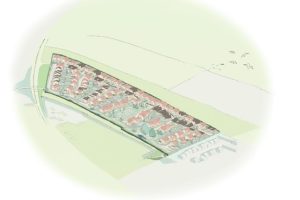Yorkshire’s property experts react to Grimsey Review

THE region’s property community has reacted positively to former Iceland and Wickes retailer Bill Grimsey’s alternative High Street review which outlines 31 recommendations on how to save UK town centres.
Mr Grimsey, who has previously said the Portas Pilots were giving false hope, launched the review after becoming frustrated with current Government policy.
It was trailed with his desire to see large chains pay 0.25% of one year’s sale into a local economic development fund to help sponsor start-ups and new ventures, but more detail on issues such as business rates and planning regulations has now been unveiled.
In the report, which can be read in full here, Mr Grimsey recommended the immediate reintroduction of the 2015 business rates revaluation to realign property values and freeze business rates from 2014.
He said once revaluations have taken place any future increases should be an annualised CPI rate rather than a one-month snapshot, and from 2017 revaluations must be conducted annually.
Any business occupying a retail property in the retail core of a town centre that has been vacant for 12 months should receive 50% rate relief for two years, the report states.
It also calls for local authorities to hold a public meeting annually to present the 20-year vision, town centre plans and progress made in the year, supported by an annual progress report.
“There must be a political will and determination to property taxation once the Government’s fiscal debt consolidation plans have been fully implemented,” said the review.
“The business rates system needs a root and branch review to establish a flexible system that will reflect changes in economic conditions as they occur.”
Mr Grimsey said: “The Grimsey Review is an alternative review available to all political parties in order to shape policy and action plans that, when implemented, will make a difference. We started from a recognition that the high street model as we know it is finished. We need a radical transformation for it to have any chance of survival. Anything short of this is just window-dressing, keeping a failed model on a life-support machine.”
Rob Cane, director in Jones Lang LaSalle’s retail and leisure team in Leeds, said: “There are two strands of the Grimsey research with which we strongly agree. Firstly, the need to address business rates and secondly, the need for flexibility in the design and use of our high streets.
“The principle of business rates is fine, but the process of valuing to a pre-recession antecedent date is profoundly unreasonable and economic torture for all business occupiers, and especially retailers. A majority of landlords acknowledge that rental values have fallen and will accept vastly reduced rents to help retailers and of course, themselves.”
“The good news is that the high street isn’t terminally ill, but maintaining economic vitality depends on flexibility and design and use of our high streets. Without use class restraints, the high street would naturally adapt and the government should help accelerate this change.”
Graeme Walker, director of retail at Lambert Smith Hampton (LSH) in Yorkshire said he welcomes the findings of the report and agrees with what has been outlined.
“The Portas Pilots were successful in putting town centres and high streets on the agenda, but we must take the next step and rethink the strategy to bring back life to once thriving areas,” he said.
“Grimsey’s suggestion that high streets need to encompass footfall generators such as health centres, education, housing and leisure is something that we also believe. The rise of internet and mobile shopping has meant that a purely retail offering is no longer sufficient to attract consumers.”
Mr Walker said that the high streets must become “social hubs” if they are to survive.
“Pop-up shops and window dressings in vacant units are not going to bring people back. What we need in places like Wakefield, Doncaster and Halifax is a completely new model. We need investment in properties and a convergence of vital and diverse services so that the town centre really is the central location for the area,” he said.
“The key is understanding that consumer needs have changed. While the Grimsey Report might make difficult reading for some, the problem of declining town centres and unhappy communities needs a tough solution.”
Prew Lumley, a partner specialising in retail in the Leeds real estate team of Squire Sanders, said: “Not unsurprisingly there are very obvious similarities between the finding of the Grimsey report and the original Portas Review. Both highlight the need for action on issues such as parking, business rates, out of town schemes, empty shops and the planning regime.
“Both Portas and Grimsey make a number of sound and sensible proposals. The reality is that we should not be looking for the differences and comparing the recommendations but taking the best from both these reports and ensuring there is the will and the financial resource to put the measures into practice.”








